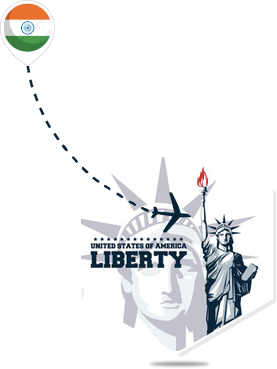
What's the right way to write a LinkedIn headline The headline should be outcome-oriented instead of product-oriented, conveying your expertise and building credibility. You should also include the title of your current job and the name your company. Then, mention your unique selling points. These are some ways to make your headlines as captivating as possible. Let's look at some examples. LinkedIn headlines should contain your current job title, company name, and current position. The headline should include a call-to action.
LinkedIn headlines are outcome-oriented rather than product-oriented
Your headline should include the word "outcome". This will help you stand out among your competitors. Think about what the prospective customer will experience after working with you. Does your headline speak to the customer's experience? Does it reflect your expertise? Does it make you stand out from the rest? Your headline should reflect what distinguishes you from other consultants or writers.

Rosi Ross's LinkedIn headline highlights her experience with digital media. This title catches people's attention and grows interest in her profile, which leaves more room for the "About" section. After writing this headline, she moved to the USA. To draw attention, she includes her job title. This helped her get a job in the USA.
They increase credibility
Your headlines should convey your message clearly, communicate your value, and inspire action. While clever headlines are possible with a catchy rhyme, unique word or catchy phrase, they must not distract from the value proposition. Here are some ways to create a compelling headline for LinkedIn.
It is important to choose a title that highlights the specialty of your job. Also, a brief summary about your work history can help others see your profile. This will allow them to connect with you. You should include the job title. However, you should not focus on the salary of the employee or your call to actions. If a student doesn't have any experience working and is unable to start work until graduation, it might be hard for them create an effective headline.
They lack a call-to-action
LinkedIn users detest headlines with no call-to-action. Your headlines must be more engaging and persuasive in order to encourage people to read your content. Here are some examples of bad headlines:

LinkedIn headlines must contain keywords or phrases that employers will use to find potential employees. The example below shows me using the words'marketing' &'sales to describe my company. I made sure to include at minimum three keywords that would be found when people search for my job. These keywords are also crucial to your LinkedIn profile. These keywords are crucial to your LinkedIn profile if you want recruiters to find you.
FAQ
Why would a company employ a consultant to help them?
Consulting provides expert advice about how to improve your business performance. They don't sell products.
A consultant helps companies make better decisions by providing sound analysis and recommendations for improvement.
Consultants often work with senior management to help them understand how to succeed.
They provide coaching and leadership training for employees to enable them to achieve their peak performance.
They can help businesses reduce costs, streamline processes, and increase efficiency.
How do I become successful as a consultant?
Find an area that you are passionate about. Building relationships is the next step. It is crucial to learn about your clients and understand their needs. Finally, you have to deliver results for your clients.
While you don't need to be the best at all things, it is important to be better than others. You also need to have a passion for what you do. It's not enough to just say "I want to be a consultant." It's important to believe in your abilities and do what you love.
How does consulting differ from freelancing?
Freelancers work as independent contractors and offer their services without the assistance of an agency or company. Hourly rates are usually charged based on the time they spend working on a client’s project. Consultants often work for companies or agencies that employ them. Their salaries are paid usually monthly or annually.
Freelancers tend to have more flexibility than consultants because they control their work hours and set their own prices. But consultants have more benefits like vacation days, health insurance and retirement plans.
Statistics
- Over 62% of consultants were dissatisfied with their former jobs before starting their consulting business. (consultingsuccess.com)
- WHY choose me: Why your ideal client should choose you (ex: 10 years of experience and 6-week program has helped over 20 clients boost their sales by an average of 33% in 6 months). (consultingsuccess.com)
- So, if you help your clients increase their sales by 33%, then use a word like “revolution” instead of “increase.” (consultingsuccess.com)
- "From there, I told them my rates were going up 25%, this is the new hourly rate, and every single one of them said 'done, fine.' (nerdwallet.com)
- According to statistics from the ONS, the UK has around 300,000 consultants, of which around 63,000 professionals work as management consultants. (consultancy.uk)
External Links
How To
What's a typical day like for a Consultant?
A typical day will vary depending on the type of work you are undertaking. But generally speaking, you will spend time researching and planning new ideas, meeting clients, and preparing reports.
You will have many meetings where clients and you can discuss their issues. These meetings can be done over the phone or via email.
It is possible that you will be asked to write proposals. These documents outline your ideas and plans, and are required by clients. You will need to discuss these proposals with a mentor or colleague before you present them to clients.
After all the planning and preparation, you will have to produce some content. Writing articles, designing websites, editing photos or conducting interviews are just some of the options.
It depends on the project's scope, you might need to do some research to collect relevant statistics. It may be necessary to know how many customers are currently using your products or services.
After gathering enough information, you can present your findings to clients. Your findings may be delivered orally, or written.
After the initial consultation, it is important to follow up with clients. You might contact them regularly to check on their progress or send them emails to confirm they have received your proposal.
Although this process can take time, it is important to stay focused and build good relationships with your clients.